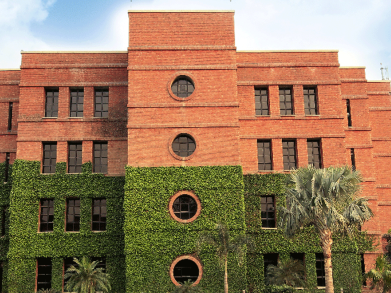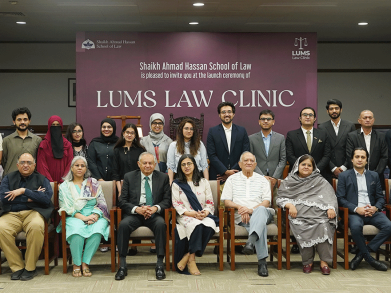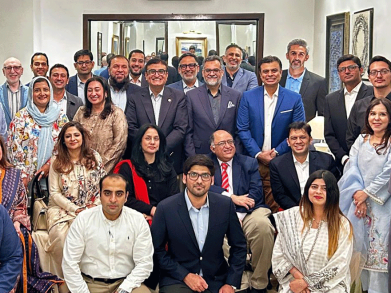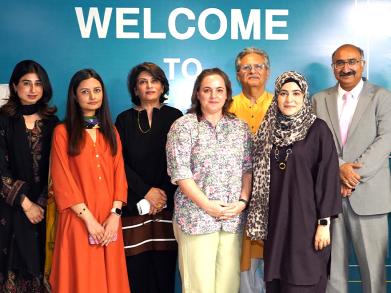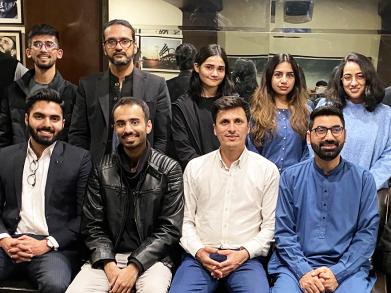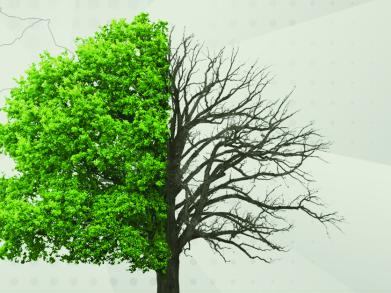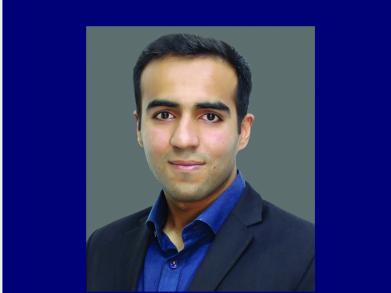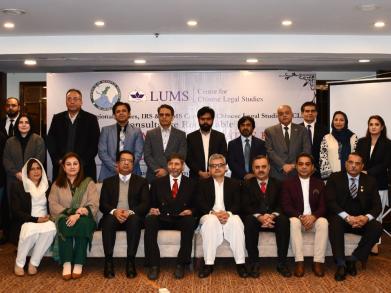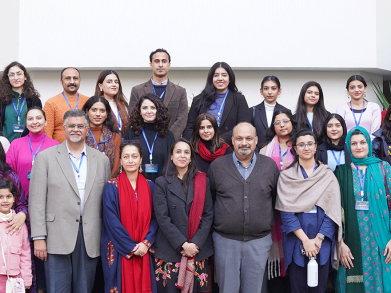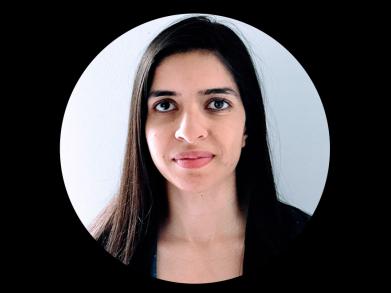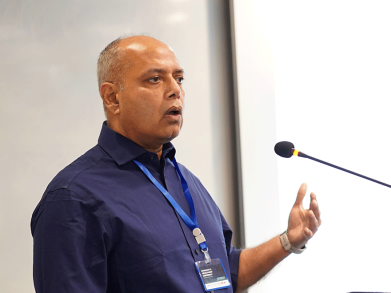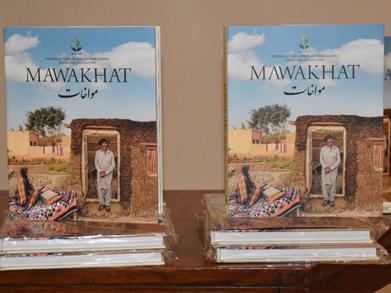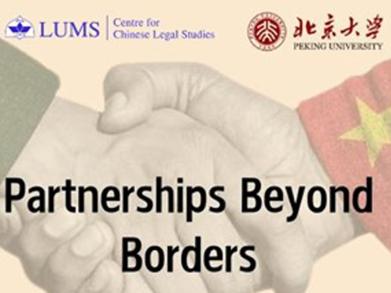Lahore Biennale’s Climate Congress Session on Urban Ecologies: Infrastructures and Lived Realities
In collaboration with Lahore Biennale’s Climate Congress, LUMS hosted a series of sessions that drew attention to the urgent environmental issues shaping our world. A panel discussion on ‘Urban Ecologies: Infrastructures and Lived Realities’ held on November 8, explored how urban environments impact climate, ecology and environmentalism.
Moderated by Dr. Maryam Ibrahim, Assistant Professor, and Director of the Environmental Studies minor at LUMS, the session brought together faculty members from the university to share their research and insights. Dr. Ibrahim highlighted that while cities face significant environmental vulnerabilities, they are also “spaces of agency and influence, holding the potential to shape resilient and sustainable futures.”
In his opening remarks, Dr. Ali Cheema, Vice Chancellor, LUMS, pointed out that Pakistan has become ground zero of the climate crisis. He also noted the importance of such discussions, stating, “There's no better way to bring this alive than by bringing the urban fabric into a conversation with art, with discussion, and with thought. I think we need to take a step forward and think about the pathways that can actually start to move the needle on people's livability.”
Social Networks and the Future of Environmentalism
Dr. Amen Jaffar
Associate Professor, LUMS
In his presentation, Dr. Jaffer offered a human perspective on Lahore’s recycling economy, focusing on the social networks and informal systems that allow this sector to function. He highlighted the experiences of people like a young Afghan worker who painstakingly sorts through discarded materials to extract valuable metals—a laborious task that supports his family and, more importantly, allows him to build a future. "He didn’t see this as an act of recycling or simply extracting value," Dr. Jaffer explained, noting how this work transforms waste into economic sustenance and even life milestones.
Dr. Jaffer also shared that Lahore’s informal waste economy extends beyond individual livelihoods to support larger industries and connect communities. He pointed to scrapyards as not only hubs of economic exchange but also essential spaces for community life, where Afghan workers find solidarity, support, and a sense of belonging in a foreign city. “On the one hand, the scrapheap is a place where labour is appropriated, where exploitation of labour also occurs. But at the same time, it is also a place where an active life is forged with and around waste,” shared Dr. Jaffer.
He also noted how working with and extracting value from waste in Lahore “is the lifeblood of the region’s economy.” His talk illustrated how recycling is woven into the very social fabric of the city.

Women, Public Spaces, and the City - Everyday Modalities of Being and Belonging in Lahore
Ms. Aneeqa Wattoo
Teaching Fellow, LUMS
In her talk, Ms. Wattoo shared her research on working-class women in Lahore. She examined their aspirations, daily experiences, and complex relationships with the city, focusing on how they navigate public spaces amidst challenges of harassment and safety.
Her research explored how these women, particularly those commuting for work, have lives shaped by both the desire for upward mobility and dealing with societal expectations. “What are working women’s dreams and visions for their lives with regards to freedom, upward social mobility, and, of course, empowerment?” she asked. Ms. Wattoo shared responses from her interviews that offered intimate glimpses into how the respondents’ aspirations intersected with their experiences of public spaces.
Her findings revealed that working-class women often feel safer on more exposed forms of transport, such as motorbikes, than in enclosed cars. “A bike feels safer to me,” one woman explained, “because if they even bother you a bit, you can get off. A bike has to park at the signal; everyone is watching.” This insight suggests that the community’s gaze within public spaces can provide a degree of safety.
Ms. Wattoo also discussed whether access to public spaces translates into an actual right to occupy them. Her exploration delves into how working-class women in Lahore, through resilience, and at times resistance, carve out spaces for themselves within the city.
Who Cares About Water (ine)Quality??
Dr. Ameem Lutfi, Assistant Professor, LUMS
Dr. Nosheen Zaidi, Punjab University
Dr. Zaidi presented an analysis of Lahore's water contamination issues, highlighting the alarming prevalence of antibiotic-resistant bacteria in the city’s water supply. Through a multi-year water quality mapping project, the team identified specific neighborhoods with significant contamination. “We identified seven neighborhoods in Lahore as hotspots,” she noted, explaining that even areas with access to filtration plants continue to experience high rates of waterborne illnesses due to untreated contamination in the general water supply. This connection between untreated water and health issues underscored the urgent need for systemic improvements in water treatment and infrastructure.
She also detailed the broader implications of antimicrobial resistance, describing how bacteria not only evolve resistance to antibiotics over generations but can also transfer these resistant traits to other bacteria. She noted the importance of a reevaluation of water treatment protocols to avoid circumstances where even basic infections become untreatable due to antibiotic resistance.
Dr. Lutfi built on concepts shared by Dr. Zaidi and discussed the role of infrastructure in creating the conditions for biological phenomena like antimicrobial resistance. He illustrated how it can quickly affect entire communities, even those who aren’t directly connected to contaminated sources.
The discussion concluded with a Q&A session, and was followed by a performance by Wong Kit Yi, a New York-based artist.






